-
 Bitcoin
Bitcoin $106,731.2224
-1.05% -
 Ethereum
Ethereum $2,444.9804
-1.20% -
 Tether USDt
Tether USDt $1.0003
0.01% -
 XRP
XRP $2.1882
0.09% -
 BNB
BNB $651.1435
-0.61% -
 Solana
Solana $148.3252
-2.09% -
 USDC
USDC $1.0000
0.01% -
 TRON
TRON $0.2787
0.55% -
 Dogecoin
Dogecoin $0.1598
-3.16% -
 Cardano
Cardano $0.5520
-2.43% -
 Hyperliquid
Hyperliquid $39.0960
-2.64% -
 Bitcoin Cash
Bitcoin Cash $516.9519
2.98% -
 Sui
Sui $2.7011
-2.95% -
 Chainlink
Chainlink $13.0582
-1.71% -
 UNUS SED LEO
UNUS SED LEO $8.9250
-2.53% -
 Stellar
Stellar $0.2359
-0.18% -
 Avalanche
Avalanche $17.3856
-3.73% -
 Toncoin
Toncoin $2.8095
-3.56% -
 Shiba Inu
Shiba Inu $0.0...01121
-1.95% -
 Litecoin
Litecoin $85.2795
-0.85% -
 Hedera
Hedera $0.1471
-2.15% -
 Monero
Monero $319.8004
1.12% -
 Dai
Dai $1.0001
0.01% -
 Ethena USDe
Ethena USDe $1.0001
0.02% -
 Bitget Token
Bitget Token $4.5344
-1.07% -
 Polkadot
Polkadot $3.3224
-2.96% -
 Uniswap
Uniswap $6.9697
-2.75% -
 Aave
Aave $266.1658
-2.25% -
 Pepe
Pepe $0.0...09414
-3.41% -
 Pi
Pi $0.4913
-3.29%
What is the block reward for Bitcoin mining? What impact will the reward halving have?
Bitcoin's block reward, currently at 6.25 BTC, halves every 210,000 blocks, impacting miner profitability and increasing cryptocurrency scarcity.
May 05, 2025 at 01:56 am
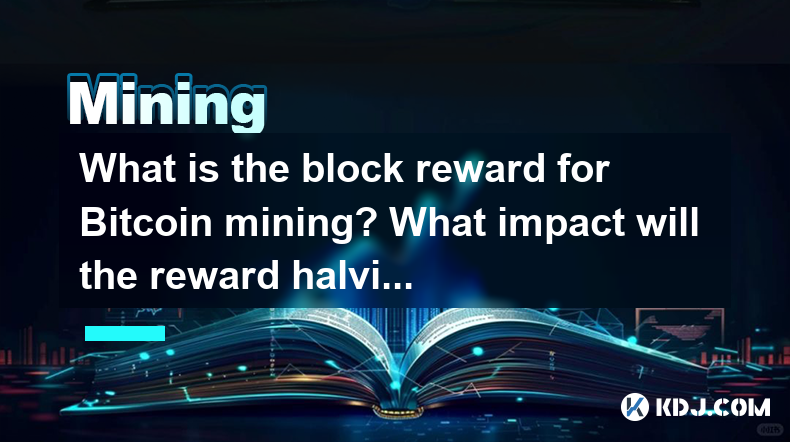
The block reward for Bitcoin mining is a crucial component of the cryptocurrency's ecosystem, serving as the primary incentive for miners to validate transactions and secure the network. The current block reward for Bitcoin mining stands at 6.25 BTC per block. This reward is given to miners who successfully solve the complex mathematical problems required to add a new block to the blockchain. The block reward is halved approximately every four years, or every 210,000 blocks, in an event known as the "halving."
The Mechanism of Bitcoin Block Rewards
The block reward system is integral to the Bitcoin protocol, designed by Satoshi Nakamoto to incentivize participation in the network. When a miner successfully mines a block, they are awarded the block reward in addition to any transaction fees associated with the transactions included in that block. Initially set at 50 BTC per block when Bitcoin launched in 2009, the reward has been halved several times since then. The first halving occurred in November 2012, reducing the reward to 25 BTC. The second halving took place in July 2016, bringing it down to 12.5 BTC, and the most recent halving in May 2020 reduced it to the current 6.25 BTC.
Impact of Bitcoin Reward Halving
The halving of the block reward has significant implications for the Bitcoin ecosystem. The primary impact is a reduction in the rate at which new Bitcoins are created, which inherently increases the scarcity of the cryptocurrency. This scarcity can lead to an increase in Bitcoin's value if demand remains constant or grows. Historically, each halving has been followed by a significant price increase, though past performance is not indicative of future results.
Economic Effects of Halving
From an economic perspective, the halving affects the profitability of mining operations. Miners must adjust their operations to remain profitable with a reduced block reward. This often leads to increased competition and efficiency in the mining industry, as miners with less efficient hardware may find it unprofitable to continue mining. Additionally, the reduced issuance of new Bitcoins can lead to a tighter supply, potentially driving up the price if demand remains stable or increases.
Technological and Operational Adjustments
In response to the halving, miners often upgrade their equipment to more efficient models to maintain profitability. This can lead to a surge in demand for the latest mining hardware, impacting the availability and price of such equipment. Miners may also seek out cheaper sources of electricity or move their operations to regions with lower energy costs to offset the reduced rewards.
Market Sentiment and Halving
The anticipation of a halving event can also influence market sentiment. Investors and traders often speculate on the potential impact of the halving, leading to increased volatility in Bitcoin's price in the months leading up to and following the event. This speculation can create a self-fulfilling prophecy, where the expectation of a price increase leads to actual price increases as more investors buy into the market.
Historical Data on Bitcoin Halvings
Analyzing historical data provides insight into the impact of previous halvings. The first halving in 2012 saw Bitcoin's price increase from around $12 to over $1,000 within a year. The second halving in 2016 led to a rise from approximately $650 to nearly $20,000 by the end of 2017. The most recent halving in 2020 saw the price climb from around $8,000 to over $60,000 in the following year. While these increases cannot be solely attributed to the halving, the event undoubtedly played a role in the market dynamics.
The Role of Transaction Fees
As the block reward continues to diminish with each halving, transaction fees will become an increasingly important source of revenue for miners. Currently, transaction fees make up a small portion of miners' income, but as the block reward approaches zero, these fees will become the primary incentive for miners to continue validating transactions. This shift could lead to changes in how users interact with the Bitcoin network, potentially affecting transaction costs and processing times.
Long-Term Implications for Bitcoin's Supply
The halving mechanism is a key feature of Bitcoin's monetary policy, designed to create a finite supply of 21 million coins. With each halving, the rate of new Bitcoin issuance slows down, moving the cryptocurrency closer to its maximum supply. This controlled supply schedule is one of the factors that differentiate Bitcoin from traditional fiat currencies, which can be printed without limit by central banks.
Frequently Asked Questions
Q: How does the difficulty adjustment relate to the block reward halving?
A: The difficulty adjustment in Bitcoin mining is a separate mechanism from the block reward halving. The difficulty adjustment occurs approximately every two weeks, or every 2,016 blocks, to maintain a consistent block time of about 10 minutes. This adjustment ensures that the network remains secure and transactions are processed efficiently, regardless of changes in the total hash rate. While the halving affects the block reward, the difficulty adjustment ensures that the mining process remains challenging and secure.
Q: Can miners influence the timing of the halving?
A: No, miners cannot influence the timing of the halving. The halving is programmed into the Bitcoin protocol and occurs automatically after every 210,000 blocks. This ensures that the halving is a predictable and transparent event, contributing to the trust and stability of the Bitcoin network.
Q: What happens if the block reward reaches zero?
A: If the block reward eventually reaches zero, miners will rely solely on transaction fees for their income. This scenario is expected to occur around the year 2140 when the total supply of 21 million Bitcoins will have been mined. At that point, the security of the network will depend on the willingness of users to pay sufficient transaction fees to incentivize miners to continue validating transactions.
Q: How do other cryptocurrencies handle block rewards and halvings?
A: Other cryptocurrencies have different approaches to block rewards and halvings. For example, Litecoin, often considered the silver to Bitcoin's gold, also has a halving event every 840,000 blocks, or approximately every four years. Some cryptocurrencies, like Ethereum, have moved away from a proof-of-work model to a proof-of-stake model, which does not rely on block rewards in the same way. Each cryptocurrency's approach to block rewards and halvings reflects its unique design and economic model.
Disclaimer:info@kdj.com
The information provided is not trading advice. kdj.com does not assume any responsibility for any investments made based on the information provided in this article. Cryptocurrencies are highly volatile and it is highly recommended that you invest with caution after thorough research!
If you believe that the content used on this website infringes your copyright, please contact us immediately (info@kdj.com) and we will delete it promptly.
- Deutsche Bank's Bitcoin Custody Play: A New York Minute on Crypto Services
- 2025-07-01 22:30:12
- ZachXBT, Ripple, and RLUSD Adoption: A Deep Dive
- 2025-07-01 22:30:12
- Open XP Redemption on Optimism: Get Ready for OP Tokens on July 15!
- 2025-07-01 22:35:12
- Altcoins in June 2025: Data, Trends, and What's Next for Crypto
- 2025-07-01 21:30:12
- SUI Price Breakout Watch: Will 2025 Forecasts Hit the Mark?
- 2025-07-01 21:30:12
- BTCBULL: Riding Bitcoin's Bull Run to Crypto Glory
- 2025-07-01 20:30:11
Related knowledge
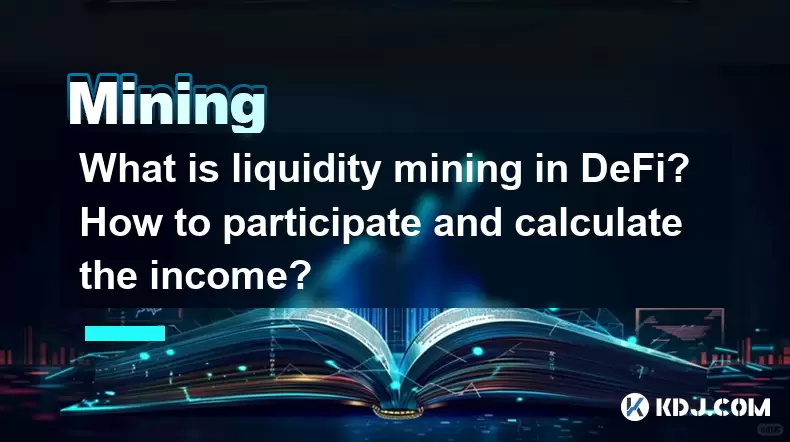
What is liquidity mining in DeFi? How to participate and calculate the income?
Jun 20,2025 at 03:21pm
Understanding Liquidity Mining in DeFiLiquidity mining is a core concept in the decentralized finance (DeFi) ecosystem that allows users to earn rewards by providing liquidity to decentralized exchanges (DEXs) or lending platforms. In traditional finance, liquidity providers are usually institutional players, but DeFi democratizes this process, enabling...
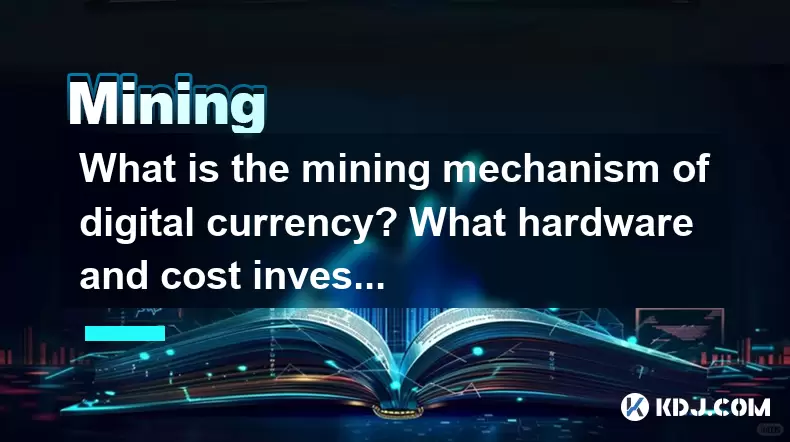
What is the mining mechanism of digital currency? What hardware and cost investment are required?
Jun 23,2025 at 06:29am
Understanding the Mining Mechanism of Digital CurrencyThe mining mechanism of digital currency is a foundational process that ensures transaction validation and network security. In most Proof-of-Work (PoW) cryptocurrencies like Bitcoin, miners compete to solve complex mathematical puzzles using computational power. The first miner to find a valid solut...
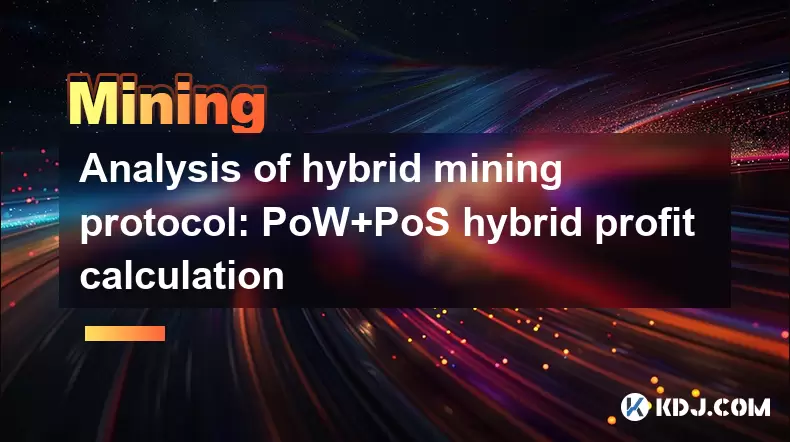
Analysis of hybrid mining protocol: PoW+PoS hybrid profit calculation
Jun 23,2025 at 10:15am
Understanding Hybrid Mining ProtocolsIn the realm of blockchain technology, consensus mechanisms are pivotal in maintaining network integrity and transaction validation. A hybrid mining protocol combines two or more consensus algorithms to achieve a balance between security, decentralization, and energy efficiency. The most commonly adopted hybrid model...
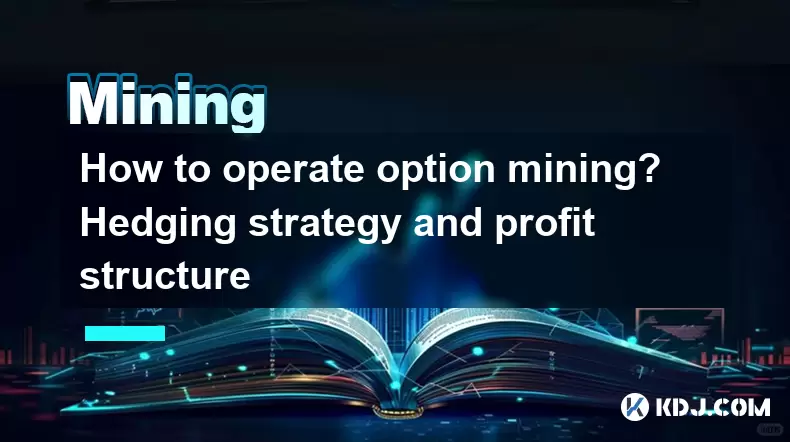
How to operate option mining? Hedging strategy and profit structure
Jun 21,2025 at 03:29pm
What is Option Mining?Option mining refers to a decentralized finance (DeFi) strategy where participants provide liquidity or take specific derivative positions in options protocols to earn rewards. Unlike traditional yield farming, option mining often involves liquidity provision for options markets, allowing users to generate returns through premiums ...
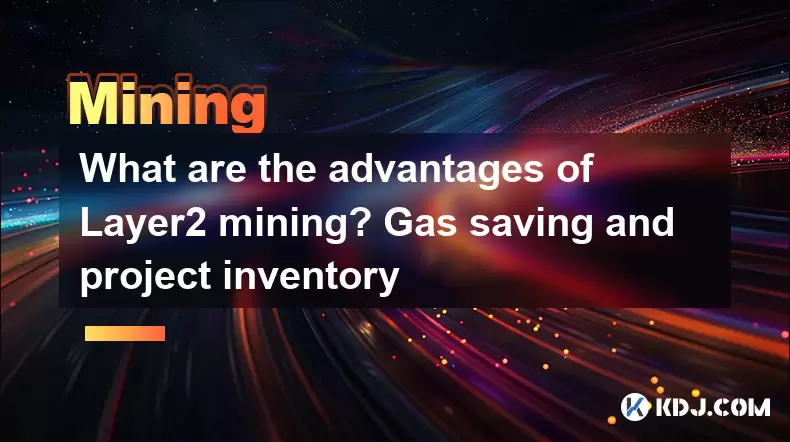
What are the advantages of Layer2 mining? Gas saving and project inventory
Jun 20,2025 at 04:50am
Understanding Layer2 Mining and Its SignificanceLayer2 mining refers to the process of participating in decentralized applications or protocols that operate on top of a primary blockchain (such as Ethereum) using scaling solutions like Optimism, Arbitrum, or zkSync. Unlike traditional mining on Layer1 blockchains, which often involves high computational...
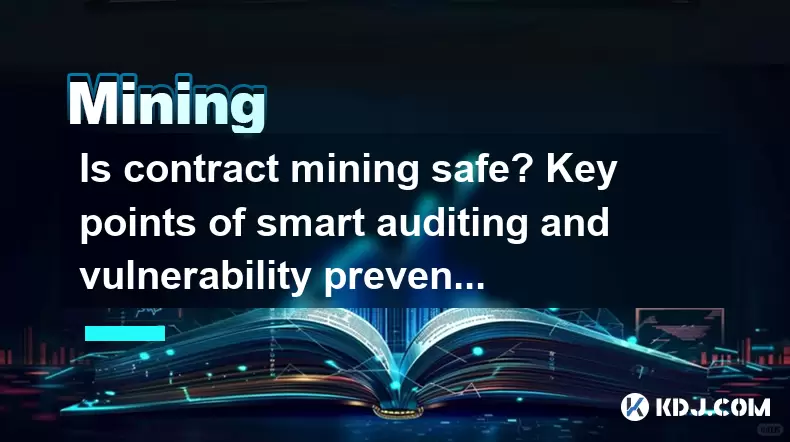
Is contract mining safe? Key points of smart auditing and vulnerability prevention
Jun 19,2025 at 08:08pm
Understanding Contract Mining in the Cryptocurrency SpaceContract mining refers to a method within blockchain ecosystems where users can participate in mining operations through smart contracts. Unlike traditional mining, which requires physical hardware and technical expertise, contract mining allows participants to invest funds into a mining pool or p...

What is liquidity mining in DeFi? How to participate and calculate the income?
Jun 20,2025 at 03:21pm
Understanding Liquidity Mining in DeFiLiquidity mining is a core concept in the decentralized finance (DeFi) ecosystem that allows users to earn rewards by providing liquidity to decentralized exchanges (DEXs) or lending platforms. In traditional finance, liquidity providers are usually institutional players, but DeFi democratizes this process, enabling...

What is the mining mechanism of digital currency? What hardware and cost investment are required?
Jun 23,2025 at 06:29am
Understanding the Mining Mechanism of Digital CurrencyThe mining mechanism of digital currency is a foundational process that ensures transaction validation and network security. In most Proof-of-Work (PoW) cryptocurrencies like Bitcoin, miners compete to solve complex mathematical puzzles using computational power. The first miner to find a valid solut...

Analysis of hybrid mining protocol: PoW+PoS hybrid profit calculation
Jun 23,2025 at 10:15am
Understanding Hybrid Mining ProtocolsIn the realm of blockchain technology, consensus mechanisms are pivotal in maintaining network integrity and transaction validation. A hybrid mining protocol combines two or more consensus algorithms to achieve a balance between security, decentralization, and energy efficiency. The most commonly adopted hybrid model...

How to operate option mining? Hedging strategy and profit structure
Jun 21,2025 at 03:29pm
What is Option Mining?Option mining refers to a decentralized finance (DeFi) strategy where participants provide liquidity or take specific derivative positions in options protocols to earn rewards. Unlike traditional yield farming, option mining often involves liquidity provision for options markets, allowing users to generate returns through premiums ...

What are the advantages of Layer2 mining? Gas saving and project inventory
Jun 20,2025 at 04:50am
Understanding Layer2 Mining and Its SignificanceLayer2 mining refers to the process of participating in decentralized applications or protocols that operate on top of a primary blockchain (such as Ethereum) using scaling solutions like Optimism, Arbitrum, or zkSync. Unlike traditional mining on Layer1 blockchains, which often involves high computational...

Is contract mining safe? Key points of smart auditing and vulnerability prevention
Jun 19,2025 at 08:08pm
Understanding Contract Mining in the Cryptocurrency SpaceContract mining refers to a method within blockchain ecosystems where users can participate in mining operations through smart contracts. Unlike traditional mining, which requires physical hardware and technical expertise, contract mining allows participants to invest funds into a mining pool or p...
See all articles

























































































